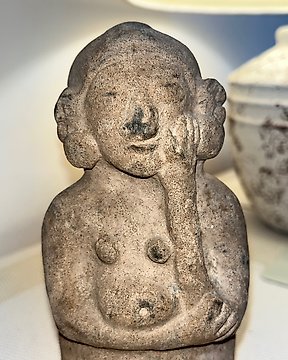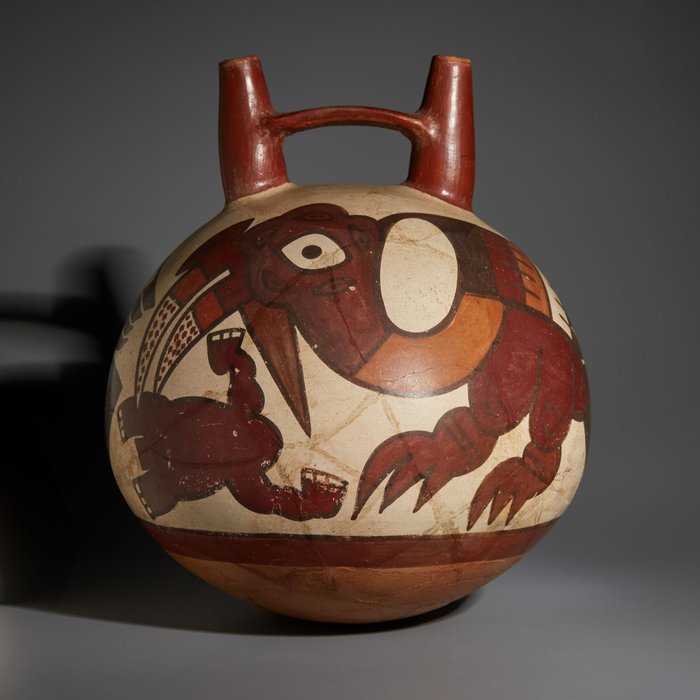
Tumaco-Tolita Terre cuite Pregnant Woman in thinking position - 23 cm
Nº 83804363

Nº 83804363

Bowl with stirrup handle.
CULTURE: Nazca, Perú
PERIOD: 100-800 AD.
MATERIAL: Terracotta
DIMENSIONS: Height 19.2 cm.
CONDITION: Good condition. It has been repaired from the original fragments.
PROVENANCE:
-Private collection of Jean Pierre Cottier and Fiorella Cottier-Angeli, Geneva, Switzerland. Acquired between 1960 and 1980 from, among others, Carlos Campilli (Miami, United States of America), Sophie Pdgorska (Geneva, Switzerland) and Marguerite Motte (Paris, France).
-Yossef Maiman private collection. Acquired between 2000 and 2008.
DOCUMENTATION: Spanish Import license included.
DESCRIPTION:
The Nazca culture developed in the valleys and coast of southern Peru, including Pisco, Ica, Cañete, Acarí and, especially, the Nazca Valley itself. This coastal desert region is carved by narrow fertile valleys.
Artistically, the Nazca are most famous for their geoglyphs, enormous drawings traced out on the bare ground of the pampa north of the settlement of Cawachi. They outline anthropomorphic, zoomorphic and phytomorphic shapes, as well as straight lines several kilometres long, all of them amazingly precise. The actual significance of the Nazca figures is not known, but most of them are so large they are best appreciated from the air. According to the main hypothesis, the place served as an astronomical observatory; another holds that it was a major ceremonial centre.
Their pottery is renowned for the quality of their vases with their fine, complexly painted imagery, and especially for the polychrome colouring of the motifs, some of which are done in six or seven different colours. The most typical type of Nazca ceramic vessel was the bridge-handled vase with two spouts. These were often painted with domestic images such as flowers, fruit, birds, animals and insects, though some bear mythological figures or individuals with both human and animal attributes.
The Nazca buried their dead in funerary bundles composed of several layers of wrapping and clothing, inside of which they deposited pottery vessels and other objects as grave goods. Higher ranking individuals had more complex bundles, which in some cases were made up of dozens of layers of textile. Severed human heads have been found among the grave goods in many graves, indicating the importance of human sacrifice in this society. This practice was apparently associated with fertility rites.
Notes:
The seller guarantees that he acquired this piece according to all national and international laws related to the ownership of cultural property. Provenance statement seen by Catawiki.
The seller will take care that any necessary permits, like an export license will be arranged, he will inform the buyer about the status of it if this takes more than a few days.
The piece includes authenticity certificate.
The piece includes Spanish Export License.
Comment acheter sur Catawiki ?
1. Découvrez des objets d’exception
2. Faites la meilleure offre
3. Effectuez un paiement sécurisé